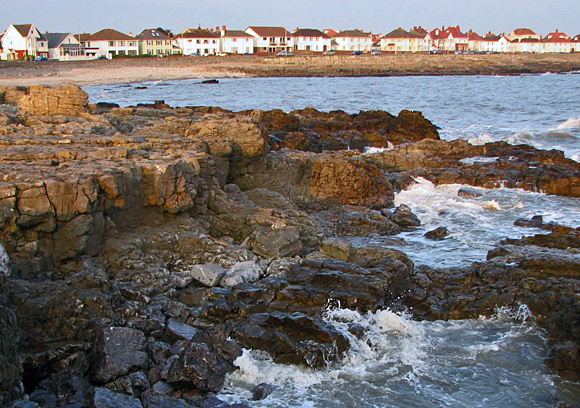Porthcawl - From 'A Topographical Dictionary of Wales' (1849)
PORTHCAWL, a rising sea-port, in the parish of Newton-Nottage, union of Bridgend and Cowbridge, hundred of Newcastle, county of Glamorgan, South Wales, about 5 miles (W. S. W.) from Bridgend. This place is situated on the shore of the Bristol Channel, and forms the natural outlet of the Llynvi and other valleys abounding with coal and ironstone: it is also the water-side terminus of the Llynvi-Valley railway, formerly called the Dyfryn-Llynvi and Porthcawl tramway. The beach offers facilities for bathing; there are two inns, and several very convenient lodging-houses have been recently erected. About twenty-five years ago scarcely any business was done here: in 1827, however, a breakwater was constructed, for the purpose of making the port efficient for the coal-traffic of the district, and a large trade was thus created. The tramway was formed about the same time, at an expense of �92,000, reaching inland for a distance of seventeen miles, and opening up a means of conveyance for the produce of the mines and quarries of a tract rich in ironstone, coal, and stone. In 1843, a great extension of the iron-trade was caused by the discovery of blackband, or carboniferous ironstone, in the hills near the line of the tramway; this species of ironstone being smelted at a much less expense than the argillaceous kind, which alone had been previously worked. The exports in the year 1846 were, of pig-iron 25,554 tons, and of coal 22,913 tons; in 1847, of pig-iron 36,705 tons, and of coal 18,340 tons. In the latter year, thirteen blast-furnaces were in operation near the line of tramway, at Maes T�g, Llynvi, and the other works. The harbour is artificial, formed by two substantial arms of masonry, inclosing a bed of soft mud, with twenty feet of water at spring, and twelve at neap, tides; it is capable of accommodating twenty vessels, and is about to be improved. In 1847 an act was passed for the conversion of the tramroad into a locomotive railway, and several important extensions are projected: at present, the length of the line, including a branch of four miles and a half to the thriving town of Bridgend, is twenty-one miles and a half. | 






